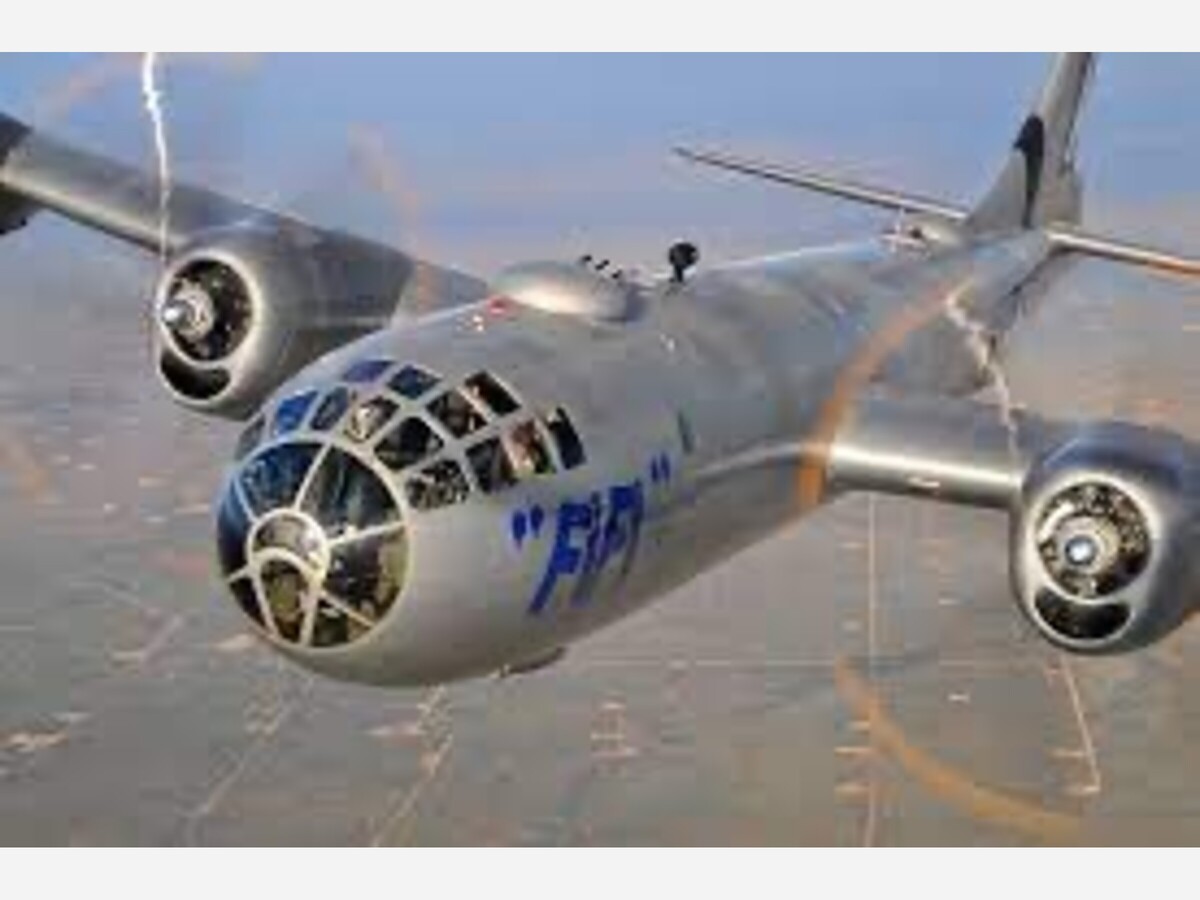Image

On June 2, 3, and 4, 2023, the Reading airport’s Mid-Atlantic Air Museum will host its annual WWII weekend, a rendezvous for reenactors, owners of WWII-era vehicles, vintage aircraft, veterans of that monumental conflict, and history buffs. And it seems to get a little bigger every year.
One of the major draws of the weekend is the number and variety of military aircraft from that era that show up regularly. Everything from small, one-man fighters to huge, multi-engine bombers is on display; and on some of them you can even take a ride. But I decided to miss the festivities again a few years ago and attend a local writers’ gathering at the Pagoda, that well-known landmark overlooking the city of Reading from the slopes of Mount Penn. As I drove along Skyline Drive on my way there, I passed several cars that were pulled over to the side of the road at wide spots and designated overlooks. Their occupants were leaning on guard rails or standing on low stone walls, binoculars in hand, searching the skies for the rare sight of a P-51 Mustang, a P-38 Lightning, or maybe an aging B-17. That weekend, their patience and vigilance was bound to be rewarded.
When I arrived at the Pagoda, I was afraid that I wouldn’t be able to find a parking place. The plane spotters were there in force. Fortunately, however, someone was backing out of a space just as I approached, and I slipped in and turned off the engine. As I got out of the car, though, I noticed something in the sky that immediately drew my attention. It was only a dark shape on the near horizon—wide and rather flat, with something protruding upward just to one side of its center. It couldn’t have been anything else but an airplane, I realized—and a big one at that.
It was flying low, slowly making its way above the city that spread out from the base of the mountain. In fact, as it got closer, it looked as if it might even be going to crash into the Pagoda. And it was surprisingly quiet. The subdued hum of its engines was audible, but only if you listened closely. As it continued its steady progress toward the vantage point where I stood watching, it looked almost as if it were hanging motionless in the sky while slowly being inflated. The closer it got, the more details became visible: four engines, landing gear that was lowered, a huge rudder at the far end of the fuselage, and wings that went on forever.
It was a B-29. Its huge wings gave it the appearance of a condor gently riding the wind currents somewhere high above the Andes. I stood motionless as I watched, fascinated by its slow, smooth, majestic passage across the valley below, the Pagoda, and the mountain itself, behind which it quickly disappeared.
I was to learn later from a local newspaper article that it was the only WWII-era B-29 still flying. There are others here and there; but they are land-bound, retired, and serve only to be looked at by the curious and the interested at various air museums throughout the country. But I felt privileged somehow to have had the opportunity to see this one in full flight. I was reminded of the observation of the writer Antoine de Saint-Exupéry, a pilot during the early days of aviation, who believed that there was something about flight itself that transcended the technology and machinery that made it possible. And I thought also of Marshall McLuhan, the Canadian philosopher of media, who pointed out how the technology of the past becomes the art of the present. Watching that huge, graceful piece of airborne machinery pass overhead was indeed a lot like admiring the artful design of a vintage Duesenberg, Bugatti, or Hispano-Suiza at an antique auto show.
But I also could not ignore the fact that the only reason for that B-29’s existence was to make war. As beautiful and impressive as it seemed as it fairly floated toward the broad brow of Mount Penn, it had been created for the sole purpose of raining sudden and terrifying destruction on both people and property below. Granted, it took such machines to finally halt the scourge of the Axis powers before they took over the entire civilized world. But what a shame that something that seems so magnificent today was used to both combat and perpetrate man’s inhumanity to man only a few generations ago.
I was fascinated and impressed by the B-29 that day, and I still feel oddly privileged to have seen the only one of its kind remaining that can still take to the air. But I have to hope that one day all such machines of war will be confined to nothing but museums and events such as the one that brought this one to Reading, where I watched with both fascination and a certain confusion of feeling while it approached a distant runway as if returning, blessedly safe and whole, from still another long-ago mission.
[Click here for additional information about this event.]
- * Craig H. Bennett holds degrees from Ursinus College and The Johns Hopkins University and is retired from the two-year college faculty of Valley Forge Military Academy and College. Prior to that he taught English in the Boyertown Area School District. He is the author of Nights on the Mountain and More Things in Heaven and Earth.